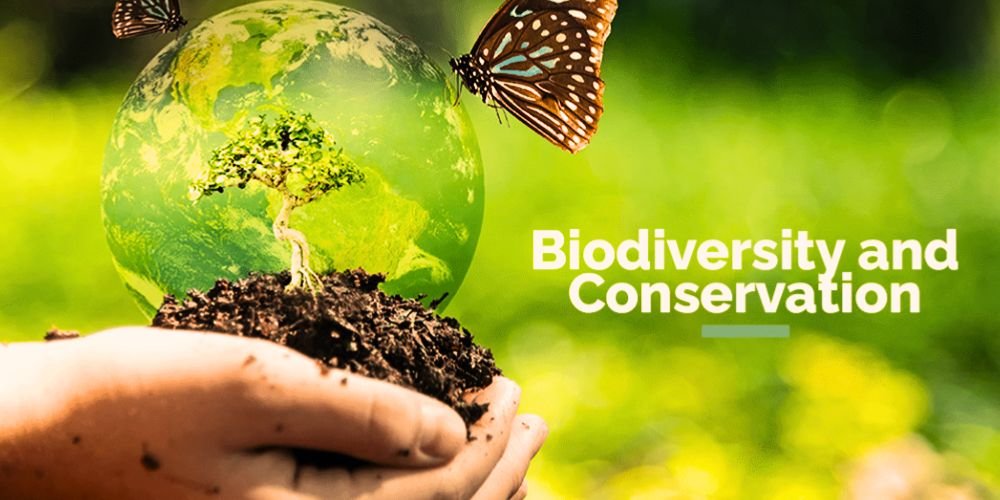Conservation genetics is a field at the intersection of genetics and conservation biology. It focuses on understanding genetic diversity, population structure, and evolutionary processes within species to inform conservation efforts. This article delves into conservation genetics’ principles, methodologies, and applications, highlighting its significance in preserving biodiversity and guiding conservation strategies.
Understanding Conservation Genetics
Conservation genetics aims to conserve genetic diversity within populations, minimize inbreeding, and prevent the loss of unique genetic variants. By studying genetic variation and population dynamics, conservation geneticists assess the health and viability of species and populations, identify genetic threats, and develop management strategies to mitigate genetic erosion and enhance population resilience.
Genetic Diversity Assessment
Genetic diversity assessment involves characterizing the genetic variation present within and among populations of a species. DNA sequencing, microsatellite analysis, and single nucleotide polymorphism (SNP) genotyping are used to quantify genetic diversity, identify unique genetic markers, and assess population structure. Understanding genetic diversity provides insights into a population’s adaptive potential, susceptibility to environmental stressors, and long-term viability.
Population Genetics
Population genetics investigates populations’ genetic structure and dynamics, including gene flow, genetic drift, and natural selection. Conservation geneticists use population genetic theory and computational models to analyze genetic data and infer demographic history, migration patterns, and evolutionary relationships among populations. Researchers can devise effective conservation strategies to maintain genetic connectivity, reduce inbreeding, and promote evolutionary resilience by elucidating population genetic processes.
Molecular Ecology
Molecular ecology integrates genetic and ecological principles to study how genetic variation influences species’ interactions with their environment. Molecular ecologists elucidate the mechanisms underlying species’ responses to environmental change and habitat fragmentation by examining how genes shape ecological traits, behavior, and adaptation. Molecular ecology approaches, such as landscape genetics and ecological genomics, inform conservation planning by identifying priority areas for habitat restoration, connectivity conservation, and species reintroduction.
Applications of Conservation Genetics
Conservation genetics has diverse applications in species conservation, ecosystem restoration, and biodiversity management, facilitating evidence-based decision-making and adaptive management practices.
Endangered Species Management
Conservation genetics is crucial in managing endangered species populations by assessing genetic diversity, monitoring population trends, and implementing genetic rescue interventions. Genetic data inform captive breeding programs, population translocations, and genetic supplementation efforts to increase genetic diversity and reduce the risk of extinction. Conservation geneticists collaborate with wildlife managers to develop scientifically sound strategies for conserving critically endangered species and restoring their populations to sustainable levels.
Conservation Prioritization
Conservation prioritization involves identifying species and populations at greatest risk of genetic erosion and extinction and allocating resources accordingly. Conservation geneticists use genetic data and ecological and demographic information to prioritize species for conservation action based on their genetic uniqueness, evolutionary significance, and vulnerability to threats. Prioritization frameworks, such as phylogenetic diversity and evolutionary distinctiveness indices, guide conservation planning and resource allocation to maximize biodiversity conservation outcomes.
Habitat Connectivity Conservation
Habitat connectivity conservation aims to maintain landscape connectivity and genetic exchange among fragmented populations to prevent isolation and inbreeding depression. Conservation geneticists assess landscape genetics, dispersal patterns, and gene flow to identify corridors and habitat linkages essential for maintaining genetic connectivity. Landscape-level conservation strategies, such as habitat restoration, green infrastructure planning, and wildlife corridors, facilitate species movement and gene flow, enhancing population resilience and adaptive capacity.
Future Directions in Conservation Genetics
The future of conservation genetics holds promise for integrating genomic technologies, interdisciplinary approaches, and collaborative partnerships to address emerging conservation challenges and advance biodiversity conservation goals.
Genomic Conservation
Genomic conservation employs high-throughput sequencing and genomic technologies to study entire genomes and genetic variation at unprecedented resolution. Genome-wide approaches, such as genotyping by sequencing and whole-genome sequencing, enable comprehensive assessments of genetic diversity, adaptive variation, and evolutionary potential within species. Genomic tools inform conservation strategies, such as assisted gene flow, genomic monitoring, and genomic selection, to enhance the adaptive capacity and resilience of populations facing environmental change.
Conservation Genomics
Conservation genomics integrates genomic data with ecological and evolutionary insights to address complex conservation questions and inform management decisions. By combining population genomics, landscape genetics, and species distribution modeling, conservation geneticists elucidate the genetic basis of adaptive traits, predict species’ responses to environmental change, and identify conservation priorities in dynamic landscapes. Conservation genomics enhances our understanding of evolutionary processes and provides innovative solutions for conserving biodiversity in the face of global change.
Collaborative Conservation
Collaborative conservation initiatives unite scientists, policymakers, stakeholders, and local communities to develop inclusive and participatory conservation strategies. Conservation geneticists engage in interdisciplinary research, capacity building, and knowledge exchange to bridge science and practice, foster stewardship, and empower communities in conservation decision-making. Collaborative partnerships facilitate the co-design and implementation of conservation interventions that integrate genetic considerations with social, cultural, and economic priorities, fostering sustainable conservation outcomes and resilience in a rapidly changing world.
Conclusion
Conservation genetics is a powerful tool for understanding and preserving Earth’s biodiversity in the face of mounting environmental threats. By elucidating genetic patterns, processes, and relationships, conservation genetics informs evidence-based conservation actions that promote genetic diversity, ecosystem resilience, and species persistence. As we navigate the complexities of conservation challenges in an era of rapid environmental change, integrating genomic technologies, interdisciplinary approaches, and collaborative partnerships will be essential for advancing conservation genetics and safeguarding biodiversity for future generations.











